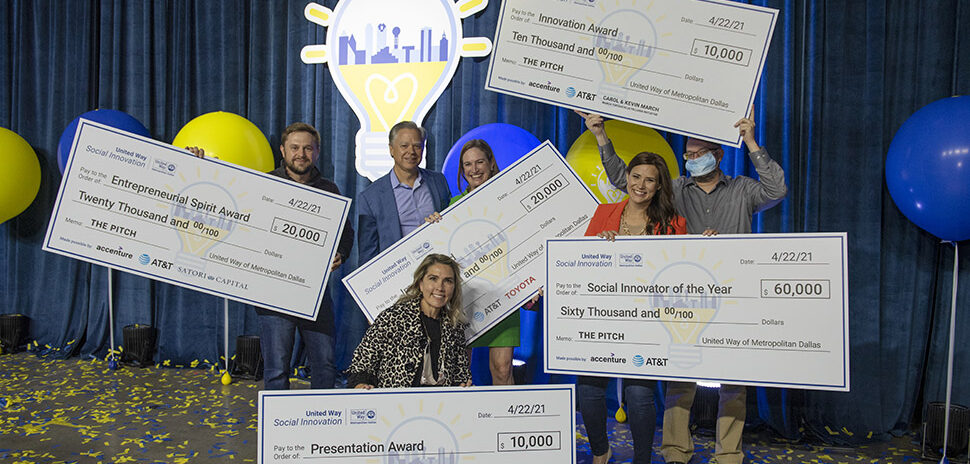United Way has been working in the social sphere for more than 125 years, but don’t call it “old.”
At least when talking about it in terms of “old power,” as outlined by authors Henry Timms and Jeremy Heimans, says Jennifer Sampson, president and CEO of the United Way of Metropolitan Dallas.
“The goal with new power is not to hoard it but to channel it.”
New Power book
The authors first published a Harvard Business Review article about the transition from old to new power in 2014.
Just this month, they released an entire book describing the paradigm shift and how it’s shaping movements and ideas in this hyperconnected, technology-driven world. It’s reach spans across the business and nonprofit sectors and into the political realm.
“Old power” is taken and held by only a few, while “new power” is available to many. It’s also participatory and peer-driven, according to the authors.
“Like water or electricity, it’s most forceful when it surges. The goal with new power is not to hoard it but to channel it,” the authors write in the book, “New Power: How Power Works in Our Hyperconnected World — and How to Make It Work for You.”
Think about movements such as #BlackLivesMatter and #MeToo, which used social media to bring about national conversations about race and sexual harassment and assault. Then there are companies such as Uber and Airbnb requiring the participation from the crowd to make their disruptive business models work.
Sampson read the 2014 Business Review article and noticed under examples of old power institutions, Timms and Heimans listed United Way.
“That caught my eye and I didn’t like it. I don’t want to lead an old power,” said Sampson, who in 2011 became the first female CEO of the United Way of Metropolitan Dallas.
NEW POWER AT WORK IN UNITED WAY
By many accounts, Sampson has been noted for bringing an entrepreneurial mindset to the role, “upending tradition” as the Chronicle of Philanthropy put it.
Under her helm, the United Way has set up its first donor-advised fund with a $1 million donation from Dallas Cowboys Hall of Famer Troy Aikman, created an accelerator program for social entrepreneurs, and transformed the way it invests in community programs.
“I think we have an eye toward the future and are open to taking smart risks,” Sampson said. “Sometimes that means changing a traditional business model to adapt to a rapidly changing world.”
“I think we have an eye toward the future and are open to taking smart risks.”
Jennifer Sampson
For the last two years, it’s led an initiative called OneUp with the social entrepreneurs in its GroundFloor accelerator. It starts with a fall digital campaign, calling upon the public to vote via social media on the organizations they see having the most community impact.
Those garnering the most support receive funding awards and the chance to compete in the spring’s OneUp the Pitch event where $100,000 is on the line. Instead of a small group within United Way determining where the money goes, the public gets that power, Sampson said.
That kind of collaborative thinking is why Sampson believed her organization leaned more toward a new power structure.
A few years ago, she reached out to Timms, executive director of the 92nd Street Y in New York, and set up an in-person meeting to make her case.
She wasn’t the only one.
Timms and Heimans received an outpouring of response from people around the world. That interest fueled their efforts for their recently released book. It’s already received praise from the likes of entrepreneur and philanthropist Richard Branson and LinkedIn co-founder Reid Hoffman to Unilever CEO Paul Polman and former Vermont Governor Howard Dean.
Beyond the book, Heimans, co-founder and CEO of movement-building agency Purpose, said they plan to train people on how to harness these new power tools for good.
“We’re doing great partnerships with scientists, health workers, educators; everyone from DonorsChoose.org to the [National Health Service] in England and many others,” Heimans said during a visit to Dallas in March.
Years after their first meeting, Sampson said she’s kept in touch with the authors. It was Timms who encouraged her to put forth United Way of Metropolitan Dallas as an organizer for the North Texas Giving Tuesday campaign. Timms actually founded Giving Tuesday in 2012 as a celebratory movement using the power of social media and collaboration to encourage philanthropy.
“GIving Tuesday is just another example of a new power tool and it was designed by Henry. We were pleased to be apart of it,” Sampson said.
SAFE HARBOR CEO SEES NEW POWER’S IMPACT ON CONSUMER EXPECTATIONS
Last fall, Sampson brought Timms and Heimans out to a Dallas chapter meeting of the Young Presidents Organization. That’s where Baxter Underwood, CEO of Dallas-based Safe Harbor Marinas, was first introduced to this take on the changing rules of power.
Initially, he’d thought he’d heard it before, but then the message really sunk in.
“What I was surprised at very quickly in their individual capacities, but certainly together, they’re able to connect these dots of these major sociological phenomenons and not in an isolated way … I started to feel like I had a better understanding of some of the changed expectations we see in our consumers and that I see even within myself and my family,” Underwood said.
“I think it has the potential to reshape how we do all elements of our business, but certainly on the service side.”
Baxter Underwood
He decided the company’s property level leadership needed to hear the explanation of new power for themselves so he asked Timms to come speak.
“I think it was hugely powerful for us. I think it has the potential to reshape how we do all elements of our business, but certainly on the service side,” Underwood said.
He said going forward, Safe Harbor will have a more keen eye on social media and has introduced a member advisory council made up of volunteers that have boats at marinas managed by Safe Harbor.
“We really want to have our ear to the ground and listen first before we make decisions and make sure those decisions are informed based on the feedback we are getting,” Underwood said.
Get on the list.
Dallas Innovates, every day.
Sign up here to get what’s new and next in Dallas-Fort Worth.

































































